Female goats are referred to as does or nannies, intact males are called bucks or billies, and juvenile goats of both sexes are called kids. Castrated males are called wethers. While the words hircine and caprine both refer to anything having a goat-like quality, hircine is used most often to emphasize the distinct smell of domestic goats.
History
Beards
Both male and female goats may have beards, and many types of goat (most commonly dairy goats, dairy-cross Boers, and pygmy goats) may have wattles, one dangling from each side of the neck.
Tan
Goats expressing the tan pattern have coats pigmented completely with pheomelanin (tan/brown pigment). The allele which codes for this pattern is located at the agouti locus of the goat genome. It is completely dominant to all other alleles at this locus. There are multiple modifier genes which control how much tan pigment is actually expressed, so a tan-patterned goat can have a coat ranging from pure white to deep red.
Genetics
Goats are diploid and have 60 chromosomes. The SLC11A1 gene is located on goat chromosome 2.
Reproduction
Goatscapeweed, a weed which is toxic to most stock animals
Goats prefer to browse on vines, such as kudzu, on shrubbery and on weeds, more like deer than sheep, preferring them to grasses. Nightshade is poisonous; wilted fruit tree leaves can also kill goats. Silage (fermented corn stalks) and haylage (fermented grass hay) can be used if consumed immediately after opening – goats are particularly sensitive to Listeria bacteria that can grow in fermented feeds. Alfalfa, a high-protein plant, is widely fed as hay; fescue is the least palatable and least nutritious hay. Mold in a goat's feed can make it sick and possibly kill it due to the presence of mycotoxins. Goats can contract Listeriosis, which is a life-threatening desease often caused by the ingestion moldy hay. In various places in China, goats are used in the production of tea. Goats are released onto the tea terraces where they avoid consuming the green tea leaves (which contain bitter tasting substances), but instead eat the weeds. The goats' droppings fertilise the tea plants.
The digestive physiology of a very young kid (like the young of other ruminants) is essentially the same as that of a monogastric animal. Milk digestion begins in the abomasum, the milk having bypassed the rumen via closure of the reticuloesophageal groove during suckling. At birth, the rumen is undeveloped, but as the kid begins to consume solid feed, the rumen soon increases in size and in its capacity to absorb nutrients.
The adult size of a particular goat is a product of its breed (genetic potential) and its diet while growing (nutritional potential). As with all livestock, increased protein diets (10 to 14%) and sufficient calories during the prepuberty period yield higher growth rates and larger eventual size than lower protein rates and limited calories. Large-framed goats, with a greater skeletal size, reach mature weight at a later age (36 to 42 months) than small-framed goats (18 to 24 months) if both are fed to their full potential. Large-framed goats need more calories than small-framed goats for maintenance of daily functions.
Behavior
Goats are naturally curious. They are also agile and wellherding systems. In all four systems, however, goats were typically kept in extensive systems, with few purchased inputs. Household goats are traditionally kept in Nigeria. While many goats are allowed to wander the homestead or village, others are kept penned and fed in what is called a 'cut-and-carry' system. This type of husbandry is also used in parts of Latin America. Cut-and-carry, which refers to the practice of cutting down grasses, corn or cane for feed rather than allowing the animal access to the field, is particularly suited for types of feed, such as corn or cane, that are easily destroyed by trampling.
Pet goats may be found in many parts of the world when a family keeps one or more animals for emotional reasons rather than as production animals. It is becoming more common for goats to be kept exclusively as pets in North America and Europe.
Meat
Goats have been used by humans to clear unwanted vegetation for centuries. They have been described as "eating machines" and "biological control agents". There has been a resurgence of this in North America since 1990, when herds were used to clear dry brush from California hillsides thought to be endangered by potential wildfires. This form of using goats to clear land is sometimes known as conservation grazing. Since then, numerous public and private agencies have hired private herds from companies such as Rent A Goat to perform similar tasks. This may be expensive and their smell may be a nuisance. This practice has become popular in the Pacific Northwest, where they are used to remove invasive species not easily removed by humans, including (thorned) blackberry vines and poison oak. Chattanooga, TN and Spartanburg, SC have used goats to control kudzu, an invasive plant species prevalent in the southeastern United States.
Medical training
As a goat's anatomy and physiology is not too dissimilar
In Matthew 25:31–46, Jesus said that like a shepherd he will separate the nations placing on his right hand the sheep, those who have shown kindness to needy and suffering disciples of Jesus and others. These he will reward, but the goats at his left hand, who failed to show kindness, will be punished. Although both sheep and goats were valued as livestock, this preference for sheep may relate to the importance of wool and the superior meat of adult sheep compared to the poor meat of adult goats.
Satanism
In some depictions the devil is depicted, like Baphomet, as a goat, therefore the goat and goat's head is a significant symbol throughout Satanism. The inverted pentagram is the symbol used for Satanism, sometimes depicted with the goat's head of Baphomet within it, which originated from the Church of Satan. The goat's head and head of Baphomet is also used in the logo for The Satanic Temple, which also featured the inverted pentagram.
Feral goats
Goats readily revert to the wild (become feral) if given the opportunity. The only domestic animal known to return to feral life as swiftly is the cat. Feral goats have established themselves in many areas: they occur in Australia, New Zealand, Great Britain, the Galapagos and in many other places. When feral goats reach large populations in habitats which provide unlimited water supply and which do not contain sufficient large predators or which are otherwise vulnerable to goats' aggressive grazing habits, they may have serious effects, such as removing native scrub, trees and other vegetation which is required by a wide range of other creatures, not just other grazing or browsing animals. Feral goats are extremely common in Australia, with an estimated 2.6 million in the mid-1990s. However, in other circumstances where predator pressure is maintained, they may be accommodated into some balance in the local
- 231–239. doi:10.1016/S0921-4488(03)00141-X. ISSN 0921-4488.
- ^ "The Eighteenth Century BC Princes of Byblos and Ebla and the Chronology of the Middle Bronze Age", p. 161 (161)
- ^ Matthiae, Paolo (2020). Ebla: Archaeology and History. Translated by Bates, R.; Bilardello, M.; Weston, A. (1st ed.). Routledge. ISBN 978-1-13885065-1.
- ^ a b c Cooper, J.C. (1979). An illustrated encyclopaedia of traditional symbols. New York, N.Y.: Thames and Hudson. p. 74. ISBN 978-0-500-27125-4.
- ^ "Satakunnan Kansa". Satakunnankansa.fi. January 13, 2011. Archived from the original on January 13, 2014. Retrieved January 13, 2014.
- ^ a b Younker, Randall W. (2000). Eerdmans dictionary of the Bible. W.B. Eerdmans. p. 510. ISBN 0802824005.
- ^ Chusid, Michael T. Hearing Shofar: The Still Small Voice of the Ram's Horn, 2009. Hearingshofar.com
- ^ "The feral goat (Capra hircus) – Invasive species fact sheet" (PDF). environment.gov.au. Archived from the original (PDF) on September 11, 2008.
Always check for more updates. . .
WHAT DO YOU THINK? - We have all sinned and deserve God's judgment. God, the Father, sent His only Son to satisfy that judgment for those who believe in Him. Jesus, the creator and eternal Son of God, who lived a sinless life, loves us so much that He died for our sins, taking the punishment that we deserve, was buried, and rose from the dead according to the Bible. If you truly believe and trust this in your heart, receiving Jesus alone as your Savior, declaring, "Jesus is Lord," you will be saved from judgement, and spend eternity with God in heaven.What is your response?Yes, today, I'm deciding to follow JesusYes, I'm already the follower of Jesus.GET BUY YOUR BIBLE, Books, Dictionary, and Others for yourself, your, children, and family @YKAMAZINGWORLD FREELANCE ENTERPRISES LIBRARY on visiting or with delivery to your location.To meet your needs with YFE click on: http://metyourneeds.blogspot.com/[Home Page] [Met your needs] [About Ykamazingworld Freelance Enterprises] [Company Overview] [Our Objectives] [Our Vision] [Our Goals] [Our Products and Services] [Our Blog] [Networking & Communications] [Consultancy] [Sales of Products Suppliers] [Industrial Training (I.T)] [Payment Rules and Regulations] [Sponsors or Fund Raising] [Ykamazingworld Proposals for Partnerships] [Ykamazingworld Banks & Accounts] [Social Media] [Our Address] [Our Contacts] [Carrier and Opportunity] [Notice for all our Clients]Goto our Sections Business sites:[Footwear & Leather Production] [Computer & Businesses] [Films & Theatre Studios] [Media & Communication Studio] [Home Planning & Building Engineer] [Farm Food Production] [Fashion, Wears & Printing Production] [Home-made & Cosmetics Production] [Iron & Metal Works production] [Aluminium & Glass production] [Furniture & Upholstery][Post Office Box] [Books & Publishing] [Import & Export of Goods] [Accomodations & Properties] [Vegetable Oil Dealer] [Ice-Block Depot, Drinks, Provision & Business Ventures] [Downloading Software] [Music & Downloading] [Video & Downloading] [GFM Holy-Bible Reading Online] [Education Study Online] [Dictionary Online] [GOto Images] [GOto World-Blog] [GOto WebChatrooms] [GOto Word of Wisdom] [GOto Answers.com]One hold, Once united, One world...Together, we rise to the future.


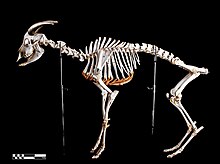
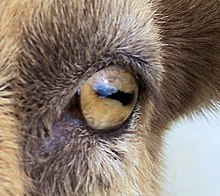
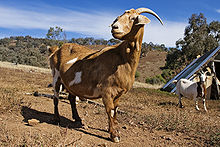


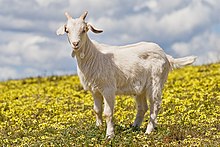






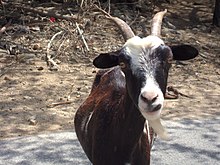
No comments:
Post a Comment